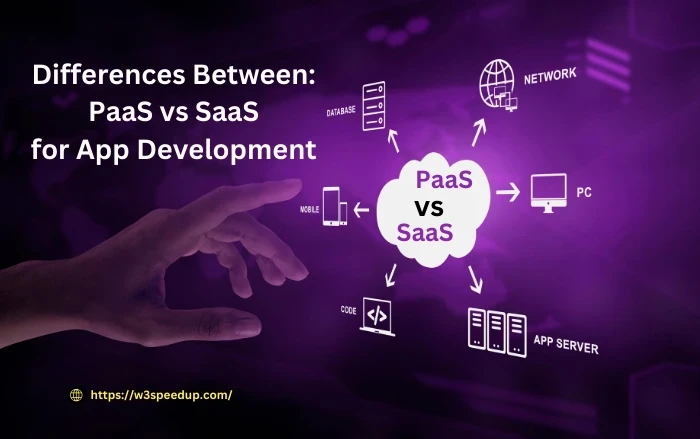Entering the app development ecosystem is like stepping into an endless web of technical terms and a pool of available platforms. But you will bump into two terms early on: PaaS (Platform as a Service) and SaaS (Software as a Service).
At first sight, they may appear to be a perfect match, but they are actually distant relatives in the tech family tree. The difference between them can shape the path of your project in big ways.
So, let’s break these concepts down into bite-sized pieces, making sure you can pick the path that’s right for you with confidence.
Let’s Start With Knowing PaaS
Imagine you are building a house. PaaS is similar to having the land, foundation, and basic structure provided for you.
Platform as a Service (PaaS) simplifies app development by providing a cloud-based platform for creating, running, and managing applications. It removes the need to build and maintain underlying infrastructure, offering convenience for developers.
This means you get tools and services designed to make coding and deploying your applications much easier. You are responsible for the design and construction (the app development), but you don’t need to worry about the land, the plumbing, or the electrical work (the servers, storage, and networking).
Now, Learn About The Role of SaaS
Now, if PaaS is about providing the building blocks for your house, SaaS is the fully furnished home where you just need to move in. SaaS delivers software applications over the internet on a subscription basis.
It’s accessible from any device with an internet connection and a web browser, which means you don’t need to worry about installation, maintenance, or software updates. SaaS is all about convenience and accessibility, offering a complete product managed by the service provider.
Finding the Best Platform For App Building
As you dive into the world of PaaS for your app development, finding a platform that feels like the perfect fit is crucial.
Popular options like Heroku and Back4app offer unique benefits, but choosing the right platform depends on balancing several factors to meet your specific needs. Heroku, for instance, has long been a favorite among developers for its ease of use and comprehensive service.
However, as the app development landscape evolves, the quest for a Heroku replacement has become more common. Developers are on the lookout for platforms that offer improved features, scalability, and flexibility to suit the dynamic needs of modern applications better.
Considering the right platform, like Back4app, involves delving into details like deployment options, which determine how quickly and efficiently you can get your app to your users. Supported languages and frameworks are just as critical as they dictate what technologies you can use to build your app.
Focus on The Crucial Differences
 Control and Customization
Control and Customization
- With PaaS, you have more control over your environment and can customize your platform to fit your app’s needs.
- SaaS offers less flexibility since the provider fully manages the software.
 Purpose and Use Case
Purpose and Use Case
- PaaS is used by developers and companies looking to build and deploy applications quickly without the hassle of setting up infrastructure.
- SaaS is for users seeking to use software applications, like email, CRM, or project management tools, without managing the underlying infrastructure or platform.
 Cost and Investment
Cost and Investment
- PaaS can save you time and money on infrastructure management, allowing you to invest more in development.
- SaaS can be more cost-effective for businesses that need specific applications without the overhead of development and maintenance.
How to Choose Between PaaS and SaaS
 Choosing between PaaS and SaaS boils down to your specific needs:
Choosing between PaaS and SaaS boils down to your specific needs:
If you’re developing an app and need a platform that offers development tools, scalability, and flexibility, PaaS might be the right choice for you.
If you’re looking for software solutions that are ready to use without the need for development or infrastructure management, SaaS is likely the way to go.
 Questions to Ask Yourself
Questions to Ask Yourself
What is my project’s scope? Understanding the size and scope of your project can help determine which service is more suited to your needs.
Do I have the necessary resources? Consider whether you have the skills and resources to manage a development environment or if you’d prefer a ready-made software solution.
What is my budget? Budget constraints can influence whether a PaaS or SaaS solution is more viable for your project.
Wrapping It All Up
In the app development process, choosing the right platform between PaaS and SaaS is crucial. Now you know that PaaS offers the groundwork and tools for building and deploying your app, providing flexibility and control. Meanwhile, SaaS delivers ready-to-use software applications, simplifying access and reducing the need for technical maintenance. So, better understand your project’s specific needs and evaluate your resources to make an informed decision.
 Christmas Mega Sale – Enjoy Up to 50% OFF on Every Plan!
Christmas Mega Sale – Enjoy Up to 50% OFF on Every Plan! 


